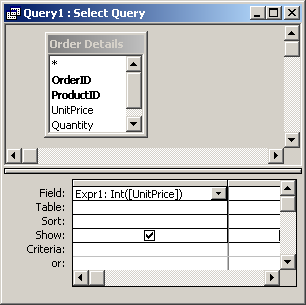
MS Access: Int Function
This MSAccess tutorial explains how to use the Access Int function with syntax and examples.
Description
The Microsoft Access Int function returns the integer portion of a number.
Syntax
The syntax for the Int function in MS Access is:
Int ( expression )
Parameters or Arguments
- expression
- A numeric expression whose integer portion is returned.
Note
- If the expression is negative, the Int function will return the first negative number that is less than or equal to the expression.
Applies To
The Int function can be used in the following versions of Microsoft Access:
- Access 2019, Access 2016, Access 2013, Access 2010, Access 2007, Access 2003, Access XP, Access 2000
Example
Let's look at how to use the Int function in MS Access:
Int (210.67) Result: 210 Int (2.98) Result: 2 Int (-2.98) Result: -3
Example in VBA Code
The Int function can be used in VBA code in Microsoft Access.
For example:
Dim LNumber As Double LNumber = Int (210.67)
In this example, the variable called LNumber would now contain the value of 210.
Example in SQL/Queries
You can also use the Int function in a query in Microsoft Access.
For example:

In this query, we have used the Int function as follows:
Expr1: Int([UnitPrice])
This query will return the integer portion of the UnitPrice field and display the results in a column called Expr1. You can replace Expr1 with a column name that is more meaningful.
For example:
IntValue: Int([UnitPrice])
The results would now be displayed in a column called IntValue.
Advertisements



